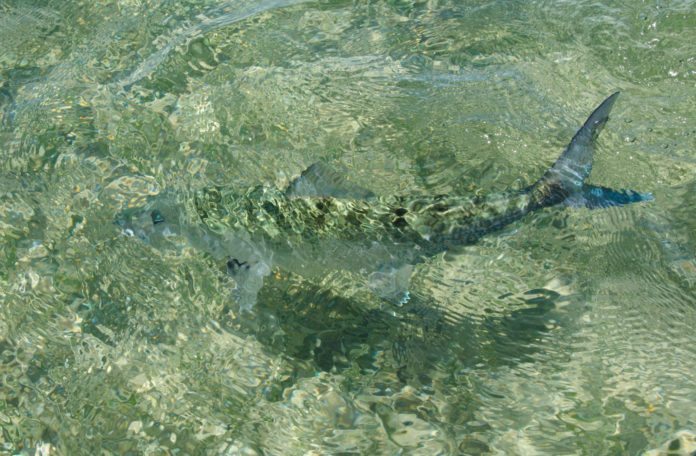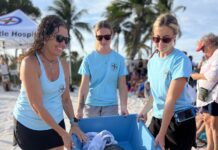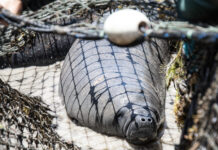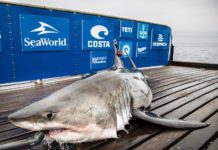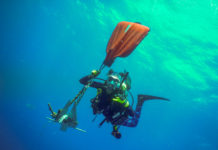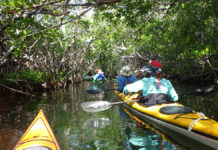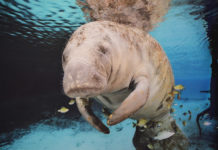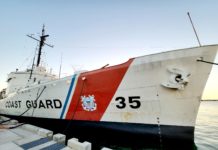Give anglers a little room
It’s Christmas in April – for Keys tarpon anglers. The big migratory fish have arrived in force to delight and torment their pursuers. For the next two months, packs and schools of the silver kings will parade along the ocean side of our islands hopscotching between bridge channels. Other tarpon will continue to work their way south from Cape Sable to be intercepted along various Florida Bay banks and bars. All of this cruising is spring break for Megalops Atlanticus before group spawning offshore in June.
Tarpon season is on schedule so far. Bay and Gulf anglers were doing well in late March and the first few days of April with laid up poons. Then as the fish filtered down to the big bridges, backcountry opportunities diminished as action picked up for those working the channels from Channel Two to Bahia Honda with live mullet and crabs. For about a week, lots of us were out on the ocean runs looking for the first migrants and not seeing much. Fortunately on April 15, the gates opened and tarpon came out to begin their annual cruising. Flats boats popped up immediately at all the classic intercept points and enough of the fish were willing to eat flies to make for happy anglers.
That happiness, however, can be spoiled quickly by mostly unwitting and unknowing other boaters. Standard fishing procedure for ocean tarpon is to stake or anchor a flats skiff beside a point or along a bar waiting for the migrants to swim by. Being nearly run over by clueless boats or having approaching schools of tarpon run over — and sent fleeing — is a far too common complaint. So a plea to our non-fishing boating friends: give the waiting flats boats a little room (say 300 yards or more) and avoid running along the tarpon migratory paths. Those paths are pretty easy to discern as most of the fish swim west to east parallel to our islands. Or if you see two or more waiting flats boats draw a line between them and that’s where the tarpon will be swimming. Run your boat outside a ways — or inside — but not along that “dotted line.” Pursuing Keys’ tarpon during the ocean migration is the year’s high point for a lot of local and visiting anglers so don’t spoil it by running too close to them or over “their” fish. Thanks!
Elsehwere on the flats, permit have largely vamoosed for offshore wrecks and reefs for their reproduction ritual. Big schools can be found at these locations and the fish are often pushovers for a live crab. Don’t forget though the Keys are part of the “Special Permit Zone” and none can be kept from May 1 to July 31; outside of those dates you can take one permit if 22 inches or longer measured to the fork of the tail.
Increasing numbers of bonefish are present and the fishing for them can be good for those not addicted to the mighty tarpon. Bones can now be found on Bay, Gulf, and Oceanside flats especially as tides continue to improve. Long time Keys’ guide Steve Huff called bones “honest fish” in that a good presentation of a fly or shrimp usually earns a bite. In contrast, Ocean tarpon often get lockjaw and simply will not bite regardless of the angler’s skill
And major efforts continue to figure why our bonefish declined and what’s to be done to bring them back to historic levels. The Bonefish Tarpon Trust, headquartered in Key Largo, just approved an aggressive set of new scientific research programs – with a $ 1.1 million price tag – to examine key factors impacting the fish. For more information check out www.bonefishtarpontrust.org.
















